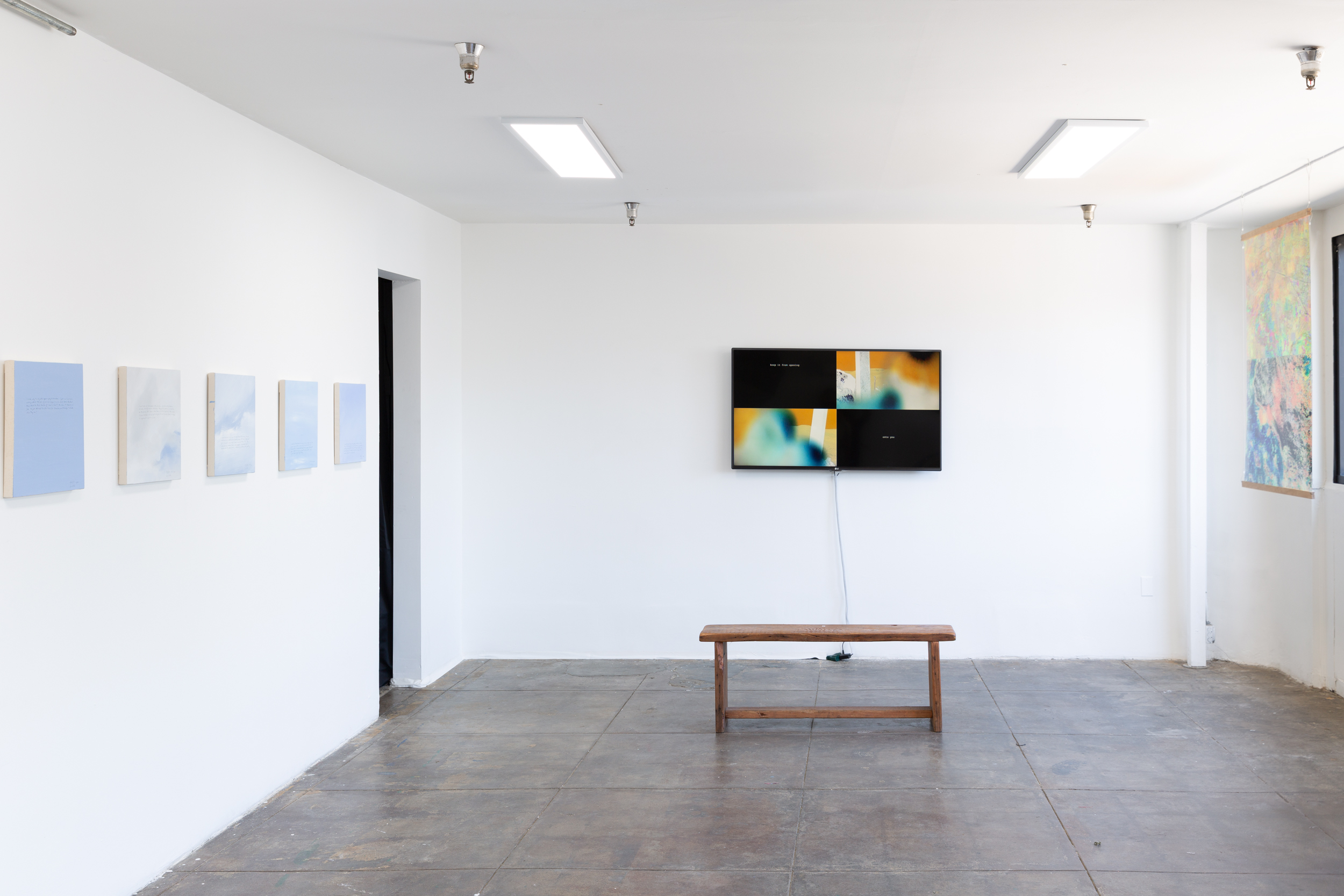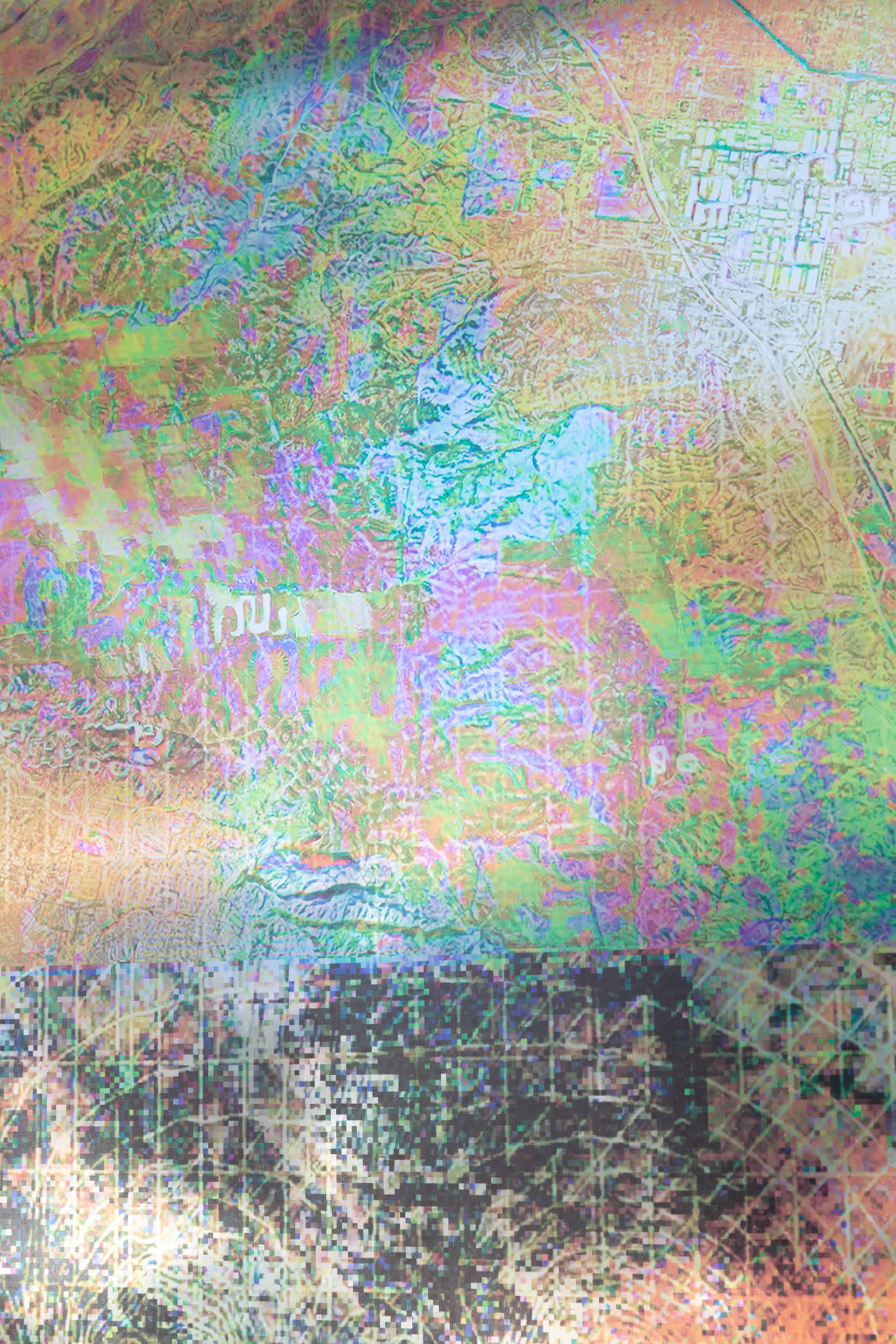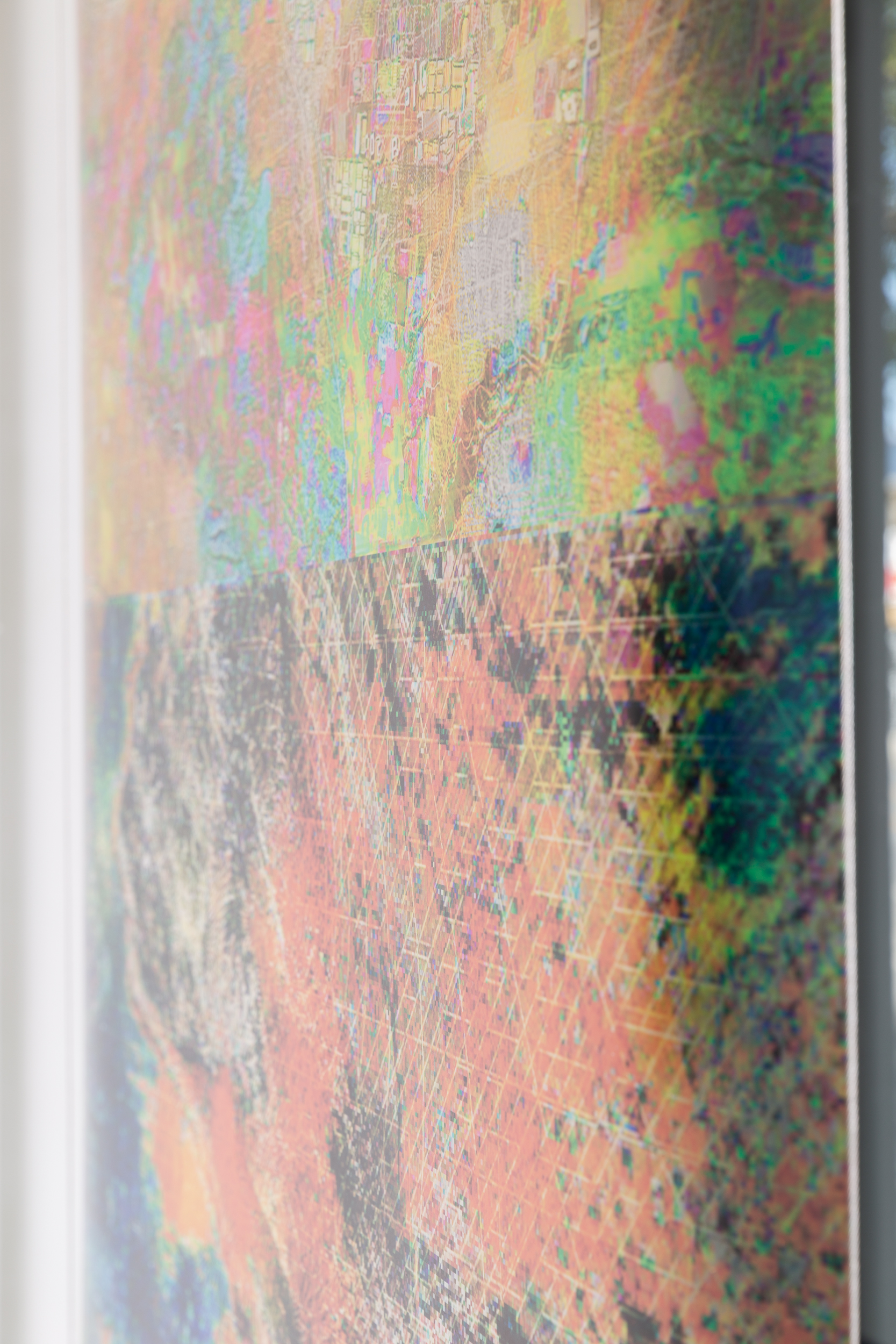Phytogeography
FEELERS: Towards Reciprocal Sensing
September 16 - October 1, 2022
TetraPod Gallery with Fulcrum Festival: Deep Ocean/Deep Space
Curators: Isabel Beavers, Maya Livio, Mich Miller, Laure Michelon
Artists: Berfin Ataman, Paige Emery, Andy Graydon, Byron Kim, Maya Livio, Laure Michelon, Shuruq Tramontini, Elly Stormer Vadseth
September 16 - October 1, 2022
TetraPod Gallery with Fulcrum Festival: Deep Ocean/Deep Space
Curators: Isabel Beavers, Maya Livio, Mich Miller, Laure Michelon
Artists: Berfin Ataman, Paige Emery, Andy Graydon, Byron Kim, Maya Livio, Laure Michelon, Shuruq Tramontini, Elly Stormer Vadseth


PHYTOGEOGRAPHY
What does a nation state’s border mean to the kelp forest? Instead, let us traverse the border between Phyllospadix and Alaria Marginata.
These Phytogeography maps depict a speculative future where borders are no longer defined by nation states or politics but instead renegotiated through the locations inhabited and claimed by plant species on the earth's crust.
Chemist James Lovelock and microbiologist Lynn Margulis inaugurated the Gaia Hypothesis, where Earth is a self-regulating entity that rules and controls herself. Harnessing the heat from our star, Gaia has produced the conditions that have led to the creation of life and humans are but a variation of her own matter. But each day we keep emitting more, adding more particles, energy, and heat into the earth’s systems, messing with her ability to maintain those conditions.
We sign empty political agreements to decrease emissions but overwhelmingly we blame other nation states, fail to hold corporations accountable, and don't consider the historical emissions we’ve generated. Our political, national, and socio-economical borders make it difficult to create actionable and impactful items. Nature, on the other hand, consistently ignores these boundaries; rivers change, coastlines erode, tectonic plates shift, and islands sink - this kinetic force is difficult to regulate as it seeks to ignore or break anthropogenic boundaries.
Using machine learning, LANDSAT imagery, and NOAA maps, Phytogeography, or the study of the geographic distribution of plant species and their influence on the earth, implies a new planetary scale shift in the understanding of how and where we exist. From this aggregation of data, Phytogeography aims to create an esthetic interface making the borders of planetary biology readable.


FEELERS: Towards Reciprocal Sensing
The climate crisis originated in an unraveling—with human animals becoming disentangled from their nested ecologies and instead envisioned as central planetary figures. In the process, privileged human forms of sensing, perceiving, and intelligence have been made dominant, pushing a rich diversity of ways of knowing and feeling to the margins. How might sensing and thinking with vegetal, animal, and other multispecies intelligences reconfigure our planetary relations? How might dominant knowledge systems be reconnected with marginalized wisdoms? And how might we seek shared sensory understandings with beings very different from us, from the deep recesses of the sea to extraterrestrial life?Through these works of video, painting, kinetic sculpture, site-specific installation, VR, and film, ‘FEELERS’ proposes expanded sensoria, complicating our understanding of feeling, sensing, and knowing. Affirming a plurality of sensemaking, the works adopt deliberate and exploratory methods that re-orient humans in relation to more-than-human beings, complicate notions of intelligence, and re-introduce perspectives outside of our own. In doing so, they generate new possibilities for respecting and connecting with multispecies understandings.
[ Supercollider ]
[ Fulcrum Festival ]
[ LA Weekly ]
